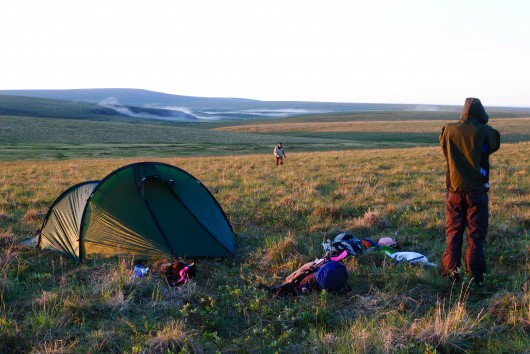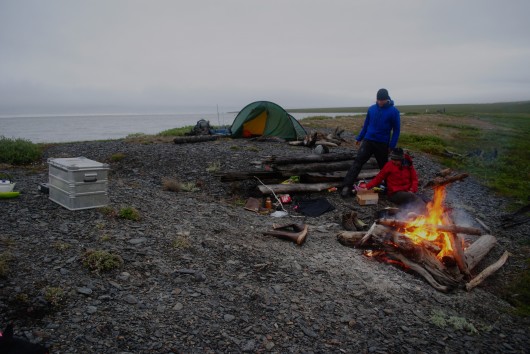Fire in tundra ecosystems is a relatively rare, though not unheard of occurrence. Here, fires burn a combination of vegetation and peat in the soil, releasing tons of carbon into the atmosphere and leading to a deepening of the seasonally thawed active layer, which may release even more carbon into the atmosphere. It is also hypothesized that fire may lead to increases in shrub cover at the expense of grasses, which will also feed back positively to climate warming. The Anaktuvuk river fire burned over 1000 km2 of tundra on the north slope of Alaska in 2007, and subsequently, the scientific community has paid increasing attention to tundra fires. Particularly given that a recent assessment of historical fire data in Alaska revealed that tundra fires are increasing in size and frequency. In Siberia however, where tundra ecosystems lie much further from major population centers and associated infrastructure, historical records are rare.
Last year a small terrestrial contingent had a chance to briefly visit a tundra fire near the mouth of the Kolyma River. Multi-year Polaris alum Logan Berner identified the fire, which occurred in the early 1970s, on a satellite image. We were interested in determining whether the effects of fire are still evident after 40 years. This year Logan, Elizabeth Webb, and I made a return trip to the tundra for several days with goal of collecting enough data to answer our question. Our plan was to hike in and camp near the burn, spending three days surveying the vegetation and soils of the fire and surrounding areas. Our trip started with fair weather, and gradually became colder and rainier. We spent our days tromping across the tundra from site to site, and our evenings near a pool of water that looked more like tea. While water is plentiful, walking across tussocks is a time consuming pain, and we decided the convenience of our location far outweighed fresher water. Besides, the dead microorganisms in the bottoms of our water bottles were proof positive that the iodine tablets had indeed treated our water. Reassurance indeed. Our last survey was conducted under cloudy skies with steady rain, a stiff wind from the north, and a temperature of 39 degrees Fahrenheit. It ended with a call on the sat phone revealing that the conditions were indeed too poor for anyone from Cherskiy to make the 120-mile round trip on the river to retrieve us that night.
Since our bags were packed, we continued the last few miles to the banks of the Kolyma and our pick up point, which had a stash of extra food and an abundance of driftwood. Our bear deterrent, which also works very well for fueling combustion engines, enabled us to quickly start a very large and warm fire despite the conditions. Fairer weather the next day allowed for our return to the station. We were all glad to be back, and to sit inside for several days sorting, drying, and weighing all of the samples we had brought back. Having spent three days walking around this fire scar we noticed little visible evidence of the fire, in terms of vegetation change, though we did actually find some charred tussocks, which was cool. Not exactly the smoking gun we may have been expecting, given anecdotal accounts from our colleagues in Alaska, but there still much sample processing and data analyses that need to occur before we can think about drawing conclusions. And with that, it’s back to the lab…





